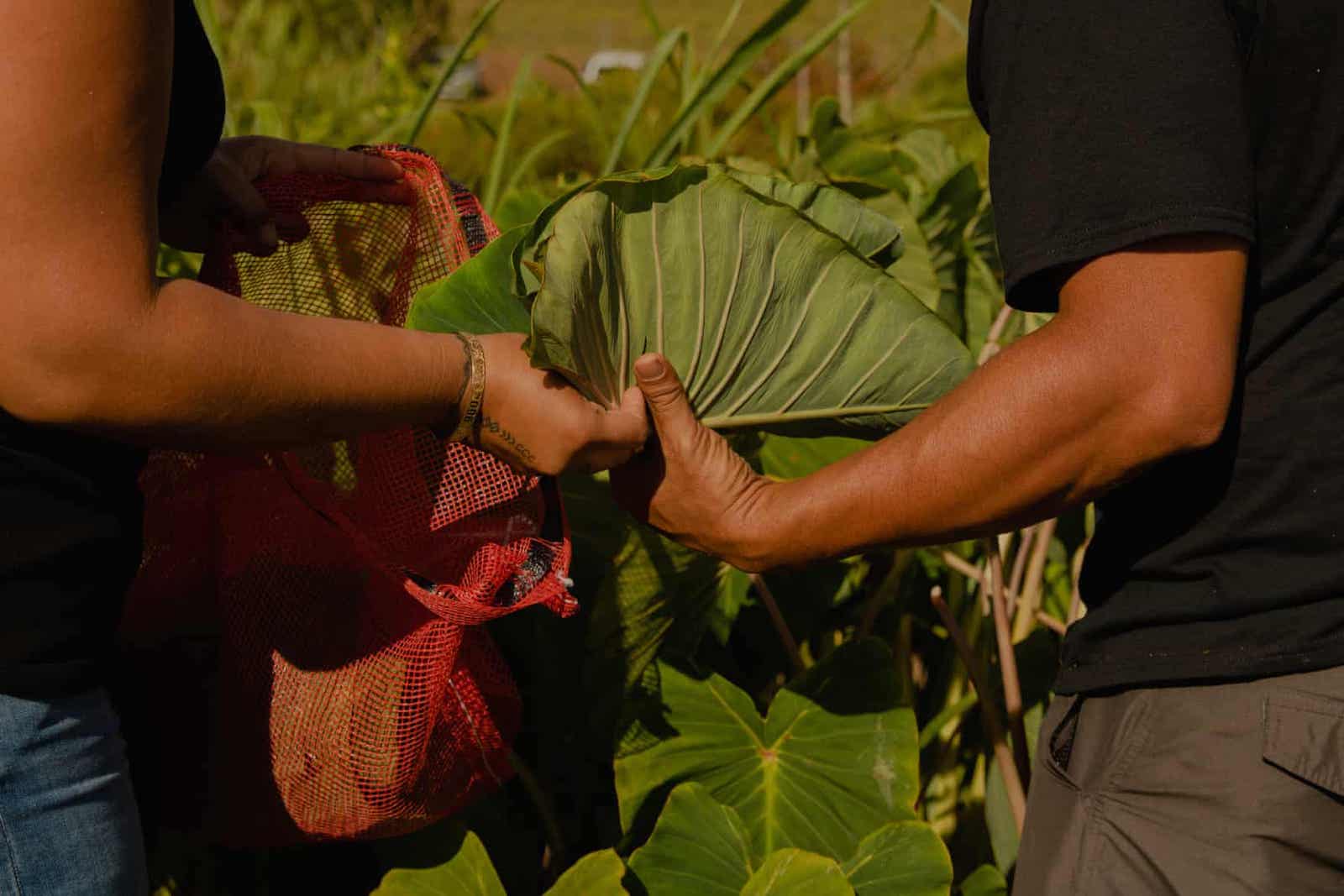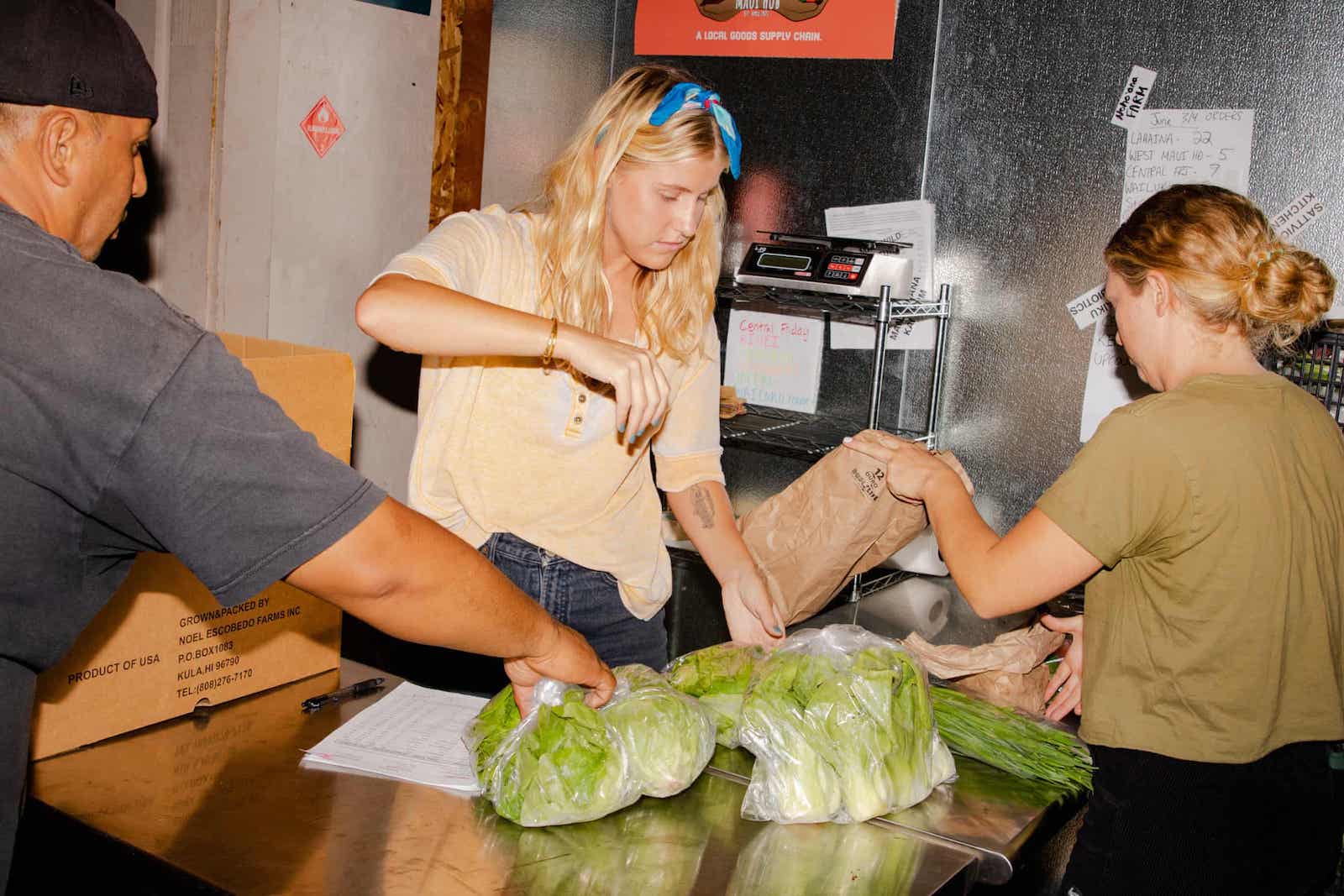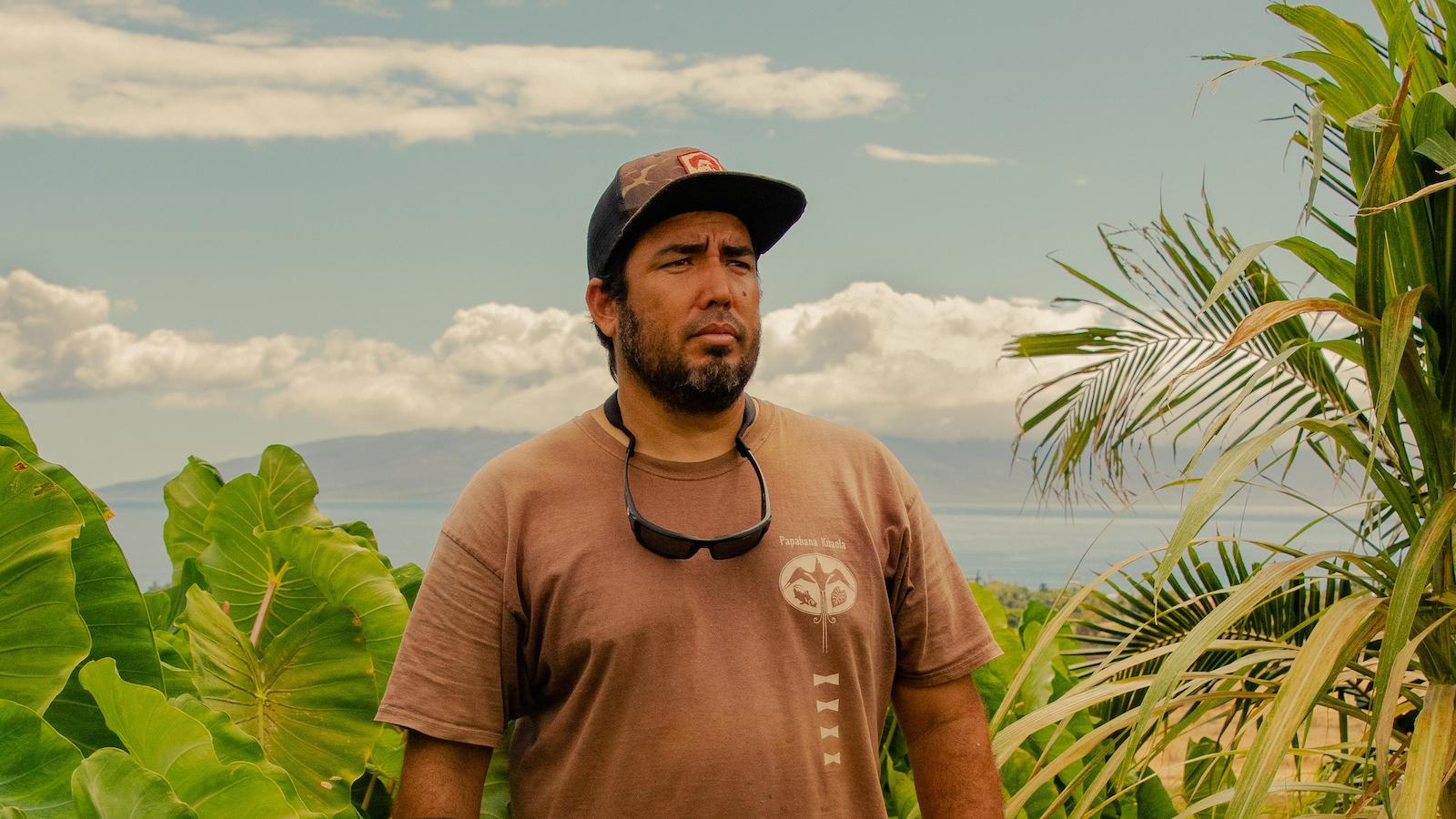This story was originally published by The Guardian and is reproduced here as part of the Climate Desk collaboration.
Rain clouds cover the peaks of the west Maui mountains, one of the wettest places on the planet, which for centuries sustained biodiverse forests providing abundant food and medicines for Hawaiians who took only what they needed.
Those days of abundance and food sovereignty are long gone.
Rows of limp lemon trees struggle in windswept sandy slopes depleted by decades of sugarcane cultivation. Agricultural runoff choking the ocean reef and water shortages, linked to over-tourism and global heating, threaten the future viability of this paradise island.
Between 85 percent and 90 percent of the food eaten in Maui now comes from imports while diet-related diseases are soaring, and the state allocates less than one percent of its budget to agriculture.
Downslope from the rain-soaked summits, there is historic drought and degraded soil.
“We believe that land is the chief, the people its servants,” said Kaipo Kekona, 38, who with his wife Rachel Lehualani Kapu have transformed several acres of depleted farmland into a dense food forest on a mountain ridge.
The soil there is once again full of life, with wriggly worms and multi-colored insects busy among the layered roots and mulch. This food forest provides a glimpse of the ancient forests that for millennia thrived on these slopes until being burnt multiple times to create cropland – a cultural and ecological tragedy documented in traditional songs, chants, and stories.
The couple are Indigenous farmers – ancient knowledge keepers – and part of a wider food and land sovereignty movement gaining momentum in Hawaii.

It’s a huge challenge. Traditional Hawaiian farmers have to contend not only with historic drought, erratic rainfall and deadly natural pathogens but also the dominance of industrial agriculture and foreign capital in Hawaii. The state became the biotech GMO capital of the US after agrochemical transnationals were welcomed to open research fields with fewer restrictions on potentially toxic pesticides.
In Kekona and Kapu’s food forest in Maui there are no pesticides or synthetic fertilizers. Cover crops and tilling are also out. “Traditional farming is about facilitating natural processes in order to feed the soil so that the land can feed us,” said Kekona.
Indigenous farming practices in Hawaii are guided by the lunar cycle and wind patterns, knowledge which was also passed down orally over generations, and even documented in newspaper articles going back to the 19th century. These oral histories and archives have played a crucial role in how farmers like Kekona, who didn’t grow up speaking the Hawaiian language due to forced assimilation policies, steward the land today.
The whole island was once a giant thriving food forest until colonial settlers in the 18th and 19th century stole the land, water and labor to create industrial monocrop plantations – mostly sugar and pineapples for export. This depleted the soil of its nutrients, carbon and water, and the Maui people of food and climate security.
“The goal is to knock the empire down and replace those corporate ag guys with something more environmentally sustainable which reflects our values,” said Kekona, who is part of the Indigenous sovereignty movement reconnecting Hawaiians with their lands and traditions.
Organized chaos
A canopy system is central to a food forest. On Kekona’s farm, sugar cane, papaya, coconuts, mangoes, coffee, and candle nut trees provide shade and absorb water, nutrients, and leaf litter, while mosses and ferns help suppress weeds and distract insects. In between are the cash crops such as the starchy root vegetable kalo or taro – a traditional Hawaiian staple revered as an ancestor – sweet potatoes, breadfruit, turmeric, and peppers, while other nutrient rich crops are mostly used for mulching or fertilizer.
It looks chaotic compared with orderly monocropping but each plant takes what it needs to thrive, while contributing to the growth and development of its peers and future generations. The 30 moon phases used in the traditional Hawaiian calendar dictate when to plant, weed, water and harvest.

Cardboard, compost and organic mulch are layered like lasagne to regenerate the soil, while beds made from logs create inviting nooks for microbes to thrive. Fish carcasses, seaweed, shells, and other ocean scraps are mixed with fermented plants such as coffee husks to make organic fertilizer – a Korean technique adapted for Maui.
Unlike industrial agriculture, diversity is key: there are nine varieties of avocado and coconuts, three native bananas, six sweet potatoes, and 27 types of kalo in orange, purple, and brown. Some are coveted for the starchy sweet roots used for porridge, others produce tastier leaves and stems for stews, and one variety smells and tastes just like popcorn. Drought-tolerant varieties are becoming increasingly important.
Non-native species such as passionfruit, lemongrass, papaya, perennial peanuts, and coffee are cultivated to enrich the soil with nutrients such as nitrogen, provide shade or wind cover, or just because they taste good.
“It’s a constant cycle, everything existing together at the same time, with crops always feeding the soil and nurturing each other,” said Kekona. “This is the essence of the forest food system, which our ancestors passed down to us over centuries.”
Maui is one of the largest islands in Hawaii, a Polynesian archipelago located 2,500 miles from the west coast of the US mainland, making it one of the most remote populated land masses on the planet . It’s a subtropical biodiversity hotspot, where flora and fauna adapted over millennia to a wide range of ecosystems and microclimates, but ecological destruction over the past century or so has also made it the extinction capital of the world.
At its heart, the traditional Hawaiian farming vision is about creating a sustainable relationship between community and agriculture by re-establishing the connection between culture and land. It isn’t just about looking back, but rather mixing ancient regenerative farming practices with modern tools and technologies to meet the climate and food challenges facing Hawaii in the 21st century.
It’s not easy. Access to land, water, credit, and housing remains disproportionately controlled by the economic and political elites, namely big ag and tourism.
One firm, Monsanto, now owned by the German pharma giant Bayer, operates on Oahu, Molokai and Maui – where it develops genetically modified corn varieties used in cooking oil, processed foods, alcohol, and animal feed, testing new seeds with an unknown combination of potentially toxic agrochemicals.
Bayer is among four agrochemical corporations that control 60 percent of the global seed market, and more than 80 percent of pesticide sales.
Dark red dirt from Maui’s research and development fields, which are surrounded by three types of metal fencing, spread across the downwind residential areas, with fine particles coating furniture even when the windows are kept shut.
Last year, the company was fined $22 million after pleading guilty to multiple criminal charges for the illegal use, storage, and disposal of hazardous and banned chemicals. Monsanto was described as “a serial violator of federal environmental laws” by a Department of Justice attorney.
The Guardian’s request to visit the Maui research facilities was denied.
Over the past decade agrochemical companies like Monsanto have used lawsuits and political lobbying to delay and limit regulations on GMO crops and pesticides in Hawaii, convincing many farmers and lawmakers that without them, agriculture would collapse.
But the pandemic exposed the dangers and fragility of the global industrialized food system, triggering an almost existential crisis for island communities like Maui which depends on imports and tourism for economic and food security.

“Letting a chemical company pollute the island to feed the world while we suffer food insecurity is beyond ironic,” said Autumn Ness, the Hawaii program director of Beyond Pesticides and co-founder of the Maui Hub, the island’s first farm box scheme which connects small farmers and producers to residents.
“What’s stopping Hawaii feeding its own people is not lack of knowledge or skills, it’s the power structure, the ongoing plantation mentality which tips the scales in favor of big ag and developers while rubbishing traditional knowledge. We need to change this narrative because, without radical changes, what will be left of this place in a hundred years?”
A Bayer spokesperson said the company’s research “diligently complies with federal and state pesticide laws … We place the highest priority on the safety of our products and on the sustainability of the land where we live and work.”
Forest families
At Hōkūnui farm in the central valley, 37-year-old Koa Hewahewa and his family of foresters mix generational Indigenous knowledge and modern technologies to repair the damage caused by intensive cattle ranching and decades of pesticides and synthetic fertilizers.
The restoration project is fundamentally about cooling the climate to return the rains and pollinators – the forest birds that were wiped out or forced to higher altitudes to evade avian malaria-transmitting mosquitoes. (The mosquito line, the altitude at which the insects cannot survive because it’s too cold, has risen drastically due to deforestation.)

The forest is considered akin to an extended family, somewhat unwieldy and unpredictable but resilient and stronger together than apart. The lofty flowering acacia and myrtaceae trees are natural-born givers, capturing fog and rain to distribute moisture outwards like a lawn sprinkler and down to recharge aquifers. While the groundcover plants such as mosses and ferns act like a living mulch and create a healthy ecosystem for all sorts of useful microorganisms.
So far they have transformed 25 acres of lifeless land into a thriving, organized jumble of edible and non-edible co-dependent plants, a technique the family call Polynesian agroforestry.
Hewahewa said: “Our yields cannot match industrial farming but our return on investment is the healthy land and water we’ll leave for our kids … this isn’t just about bringing back the rains, it’s the right thing to do as Hawaiians.”


